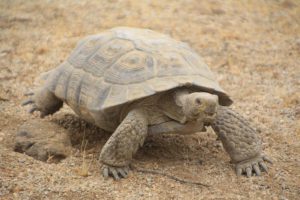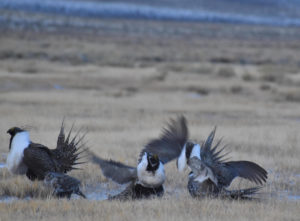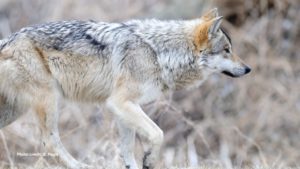For Immediate ReleaseApril 22, 2018Contact:Paul Ruprecht, Nevada-Oregon Director, Western Watersheds Project,(208) 421-4637
Conservationists put Humboldt-Toiyabe N.F. on Notice for Lahontan cutthroat trout ESA violations
RENO, Nev. — Western Watersheds Project is marking Earth Day today by filing a Notice of Intent to sue the Humboldt-Toiyabe National Forest for violations of the Endangered Species ACT (ESA) regarding the failure to manage livestock grazing in a manner that protects Lahontan cutthroat trout, listed as a threatened species under the ESA. On Earth Day 2019, the State of Nevada is emphasizing the remarkable wildlife of Nevada with a “Protect Our Species” campaign.[1]One of Nevada’s most iconic species, and its state fish, is the Lahontan cutthroat trout.
“Many of the Lahontan cutthroat trout streams in the Reese River drainage of the Humboldt River watershed of north-central Nevada are in poor condition due to livestock grazing,” said Paul Ruprecht of Western Watersheds Project.
The only trout native to the closed basins in the footprint of ancient Lake Lahontan, Lahontan cutthroat trout are a unique desert fish that evolved to tolerate high levels of alkalinity in terminal lakes. The species was once found throughout the Humboldt, Truckee, Carson, and Walker River watersheds, but have declined due to overfishing, competition with non-native trout, mining, livestock grazing, and other habitat degradation.
“Lahontan cutthroat trout were added to the endangered species list in 1970—the same year as our first Earth Day,” said Ruprecht. “The purpose of the Endangered Species Act is to recover species. While populations of threatened LCT have increased in some areas since 1970, unfortunately the fish is still struggling in many parts of its range because of livestock mismanagement and the damage to streamside habitats and aquatic ecosystems that result.”
In its most recent status review, the U.S. Fish and Wildlife Service determined that the Lahontan cutthroat trout only occupies about 3% of its historic habitat in the Reese River watershed in central Nevada. LCT in that watershed now only live in short reaches of Reese River tributary streams high in the Toiyabe Range.
And even after all these years—nearly five decades since the trout was listed in 1970—the Forest Service, which manages the LCT habitat in the Toiyabe Range, has still not evaluated whether the domestic livestock grazing it authorizes each year is harming the species and preventing it from recovering. Because of the Forest Service’s disregard for LCT, Western Watersheds Project sent a letter notifying the agency of its violations of the ESA. “The Forest Service has basically ignored the impact of cows on Lahontan cutthroat trout in the Toiyabe Range,” said WWP Nevada Director Paul Ruprecht. “It has the responsibility to study the effects of activities on the national forest like grazing, and it has not.”
Livestock grazing on public lands has a number of negative impacts on trout habitat. Livestock trample streambanks, leading to wider, shallower streams that lack cover and have warm water instead of the cold water and undercut banks that trout require. Grazing also removes riparian vegetation that shades creeks, and erosion caused by grazing leads to sedimentation of waterways and livestock also directly pollute water through their feces and urine. These impacts degrade habitat for LCT and other species that rely on scarce streams in arid Nevada.
This Earth Day call to action gives the Forest Service 60 days to correct the problem livestock grazing that is causing the declines of Lahontan cutthroat trout, or face litigation. The Notice of Intent is available upon request.###





